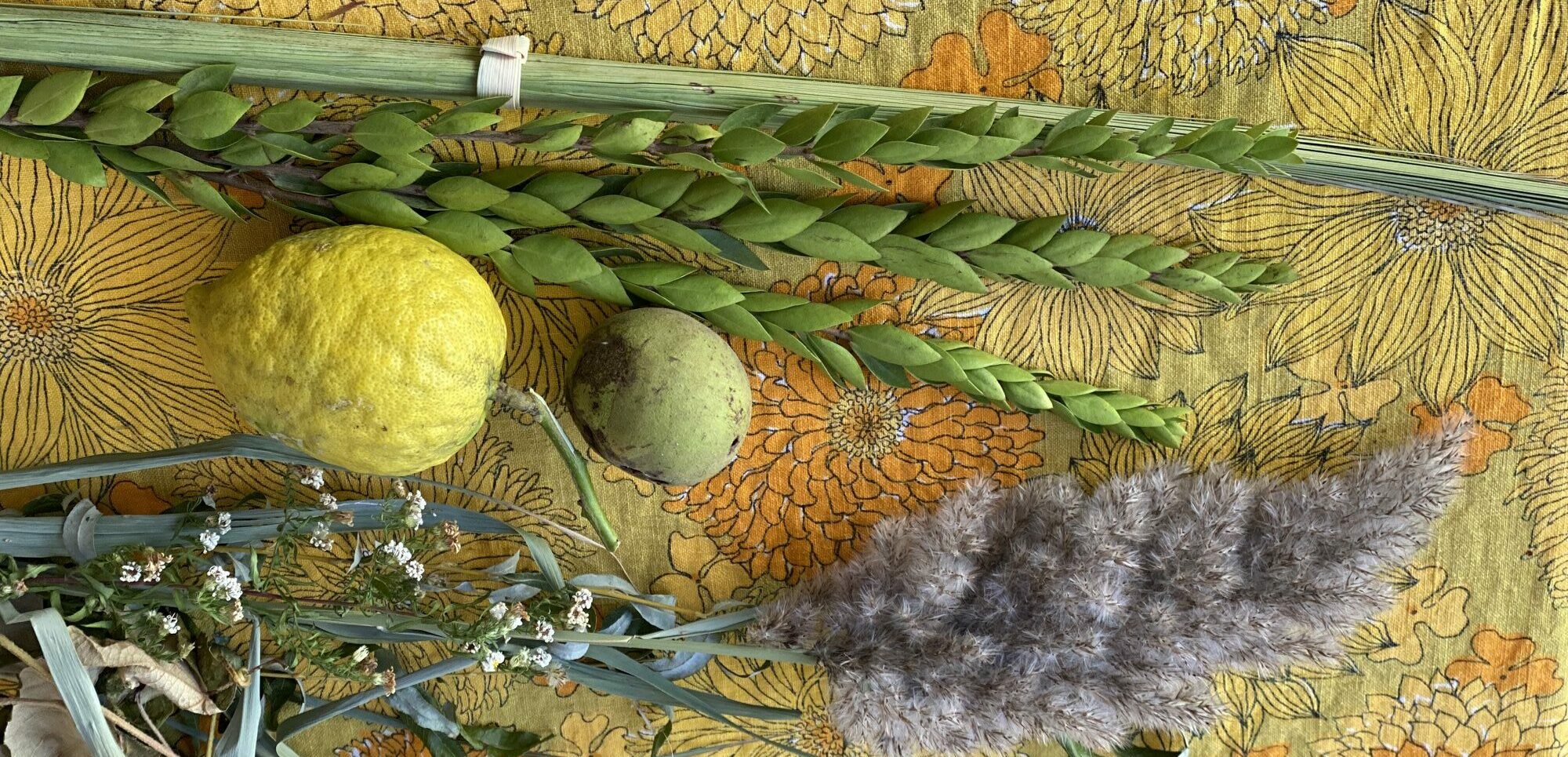Alumni Creating a Local Lulav

Rabbi Shoshana Meira Friedman, director of the Artist Beit Midrash, is one of four Hebrew College alumni to contribute to The Sacred Earth: Jewish Perspectives on Our Planet, recently published by Central Conference of American Rabbis (CCAR) Press. Other alumni contributors include Rabbi Adina Allen, Rabbi Nate DeGroot, and Rabbi Elisha Herb.
I was blessed to study Torah in the company of trees. At the Rabbinical School of Hebrew College poring over mishnayot and midrashim, my study partners and I would regularly lift our eyes from the text to look out the giant wall of windows at the small woodland outside the beit midrash. We marked each passing semester by green summer foliage in Elul, Red maples’ crimson on Sukkot, the Black birch leaves blanketing the ground in yellow by Hannukah. At Tu Bishvat, the branches were still bare, but little tufts of baby leaves would begin to bud after Purim, opening into a new riot of green as we prepared for our season of liberation, and the giving of the Torah.
Every year as a rabbinical student, I looked forward to Hoshana Rabba, the seventh day of Sukkot when Jews march seven hakafot around the Torah, crying out Hoshana! Save Us! Sukkot marks the beginning of the rainy season in the land of Israel, and before modern irrigation the right rain in the right season meant the difference between abundance and famine. The refrain of the day gives voice to what was a time of intense communal vulnerability for the ancient Israelites.
I loved Hoshana Rabba at Hebrew College. I loved the stunning aesthetic of a community wearing white (a Hoshana Raba custom), holding green palm fronds and yellow citrons. I loved the long loud shofar blast that signaled the final, lingering end of the High Holiday season. I loved kneeling after the service to whack my willow branches on the ground in total abandon alongside my teachers and friends, a custom that certainly proves to any cynics that Judaism is an earth-based religion, with its own healing plants, its own rain dances, its own sun-and-moon festivals.
Yet as the years ticked on toward my ordination, droughts and storms increased around the world and I learned the haunting truth that most of us will feel the first effects of climate change as too much or too little water. As much as I loved the ancient rain dance of Hoshana Rabba and how it connected me to the biblical land of Israel and my ancestors, I needed a rain dance that would speak to the peril of climate disruption.
Rabbi Shoshana Meira Friedman is a writer, mother, climate activist, and passionate creative in many different media. She is co-founder and director of The Artist Beit Midrash of Hebrew College and JArts, and speaks and teaches for Dayenu: A Jewish Call to Climate Action.

